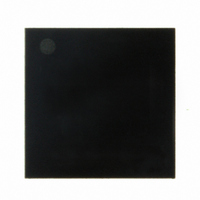TRC103 RFM, TRC103 Datasheet - Page 47

TRC103
Manufacturer Part Number
TRC103
Description
RFIC TRANSCEIVER MULTI-CHANNEL F
Manufacturer
RFM
Series
TRCr
Datasheet
1.TRC103.pdf
(64 pages)
Specifications of TRC103
Frequency
863MHz ~ 960MHz
Data Rate - Maximum
100kbps
Modulation Or Protocol
FSK, OOK
Applications
General Purpose
Power - Output
11dBm
Sensitivity
-112dBm
Voltage - Supply
2.1 V ~ 3.6 V
Current - Receiving
4mA
Current - Transmitting
30mA
Data Interface
PCB, Surface Mount
Antenna Connector
PCB, Surface Mount
Operating Temperature
-40°C ~ 85°C
Package / Case
32-QFN
Lead Free Status / RoHS Status
Lead free / RoHS Compliant
Memory Size
-
Other names
583-1095-2
The highest power setting allowed is usually chosen unless the application operates at short range and minimum
DC power consumption is critical. The 950-960 MHz band is a developing RFID allocation where regulations are
still under refinement. Consult the latest regulations for this band when developing a 950-960 MHz application.
6.3 Determining Configuration Values for OOK Modulation
6.3.1 Bit Rate Related OOK Configuration Values
The TRC103 supports RF bit rates (data rates) from 1.5625 to 33.33 kb/s for OOK modulation. As with FSK
modulation, there are several considerations in choosing an OOK data rate. The sensitivity of the TRC103 de-
creases with increasing bit rate. A bit rate should be chosen that is adequate but not higher than the application
requires. The exceptions to this rule are when the TRC103 is operated as a frequency hopping spread spectrum
transceiver. In the case of frequency hopping, running at a higher bit rate will allow a higher channel hopping rate,
which provides more robust operation in a crowded band in trade-off for less range under quiet band conditions.
The TRC103 RF bit rate is set by the value of the byte loaded in MCFG03. For the standard crystal frequency
of 12.8 MHz:
Where BR is the bit rate in kb/s and D is the integer stored in MCFG03. This configuration value supports both the
data and clock recovery circuit in the receiver and the bit rate clocking in the transmitter modulator. Solving the
equation above for D:
D must be an integer value, so BR is limited to 123 discrete values for OOK. If the value of D given in the above
equation is not an integer for your desired bit rate, round the value of D down to the nearest integer. You can then
calculate the nearest available bit rate equal to or greater than your desired bit rate.
In OOK mode, the second IF frequency F
assumes F
Once BR and F
can be determined. The recommended 3 dB bandwidth for the transmitter anti-aliasing filters is:
F
of 12.8 MHz:
Where F
tern in TXCFG1A bits 7..4, and F is the integer value of the bit pattern in RXCFG13, which has a default value of
7. Assuming this default value of F is used, the equation for determining K is:
www.RFM.com
©2009-2010 by RF Monolithics, Inc.
CTX
is configured with bits 7..4 in TXCFG1A and the byte in RXCFG13. For the standard crystal frequency
BR = 12800/(64*(D + 1)), with the usable range of D for OOK 5 to 127
D = (12800 - 64*BR)/64*BR
F
F
CTX
CTX
CTX
IF2
is the 3 dB bandwidth of the transmitter anti-aliasing filters in kHz, K is the integer value of the bit pat-
= 3*F
= 200*(K + 1)/(F+1), with K in the range of 0 to 15
E-mail:
is 100 kHz.
IF2
has been determined, the bandwidths and related configuration values for the TRC103 filters
IF2
info@rfm.com
= 300 kHz
Pattern of Bits 3..1
IF2
Technical support +1.800.704.6079
is normally set to 100 kHz. The discussion in the rest of this section
000
001
010
011
100
101
Table 56
Transmitter Power
11 dBm
-1 dBm
-4 dBm
8 dBm
5 dBm
2 dBm
TRC103 - 12/15/10
Page 47 of 64

















